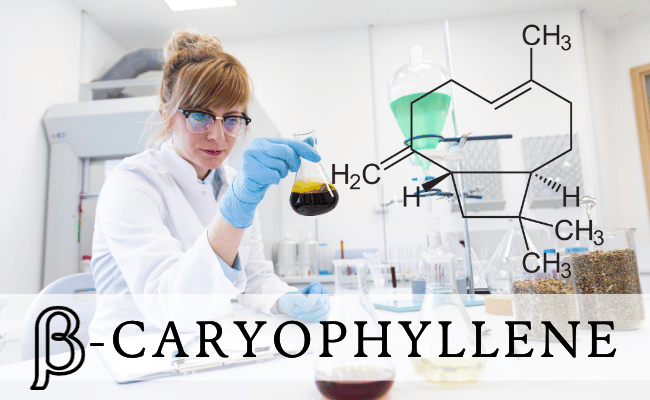The digestive system, also known as the gastrointestinal (GI) tract1, is an intricate system made up of the digestive tract and several other critical organs. Its main function is converting your food into minerals and energy, allowing the body to function, grow, and repair cells.
What is the Digestive System?
The digestive system is a complex network made up of the gastrointestinal tract, commonly known as the GI tract. This continuous pathway starts from the mouth to the anus and is designed to efficiently break food and liquid into smaller parts. The process involves both hollow organs like the stomach and esophagus and solid organs like the liver and pancreas.
Functioning of the Digestive System: How Your Digestive System Works
1. Oral Cavity: Initiation of Digestion The digestive process is initiated in the oral cavity. Here, mastication mechanically disintegrates food into smaller constituents. Concurrently, the enzyme salivary amylase commences the breakdown of carbohydrates.
2. Esophagus: Transit and Regulation Upon deglutition, the bolus is ushered down the esophagus. The epiglottis, a flap-like structure, ensures food bypasses the windpipe, averting aspiration. The lower esophageal sphincter, a specialized muscular construct, precisely modulates the bolus’s entry into the stomach, ensuring unidirectional flow.
3. Stomach: Acidic Digestion Within the stomach’s confines, the bolus encounters gastric juice—an intricate blend of hydrochloric acid, digestive enzymes, and other secretions. This caustic milieu converts the bolus into a semi-fluid called chyme, priming it for further breakdown in subsequent stages.
4. Small Intestine: Absorption and Further Digestion The chyme is propelled into the small intestine, anatomically delineated into the duodenum, jejunum, and ileum.2
Here, enzymes from the pancreas and bile from the gallbladder function in tandem to optimize the breakdown of proteins, carbohydrates, and lipids.
Crucially, the digested end-products—including amino acids, fatty acids, and glycerol—are absorbed through the intricate villi and microvilli into the bloodstream.
5. Large Intestine: Water Reabsorption and Formation of Stool Unabsorbed remnants are relayed to the large intestine. Through the intricate processes regulated by the gut flora or microbiome, water reabsorption transpires, converting the remnants into feces. This is then temporarily stored in the rectum.
6. Anus: Excretion The culmination of the digestive process is the orderly elimination of feces through the anus, facilitated by the coordinated activity of sphincters and pelvic floor muscles.
For optimal systemic function, each segment of the gastrointestinal (GI) tract must perform its designated role efficiently. Disruptions can precipitate a plethora of disorders, from gastroesophageal reflux disease (GERD) to irritable bowel syndrome (IBS).
Comprehensive knowledge of the digestive system’s intricacies is pivotal for clinical evaluation and therapeutic interventions.
Interlinked Systems and Gut Flora
The digestive system doesn’t work in isolation. The nervous and circulatory systems play vital roles. The enteric nervous system (ENS), sometimes called the “second brain,” governs the function of the GI system. Additionally, hormones, chiefly produced by the duodenum, and nerves, influence the digestive process.
The digestive tract also houses the gut flora or microbiome, a community of beneficial bacteria. These bacteria aid in food digestion, produce vitamin K, and help ward off harmful bacteria. The balance of this microbiota is essential for optimal digestion and overall health.
The Role of Solid Organs
Three significant solid organs in digestion are the liver, pancreas, and gallbladder. The liver processes and delivers nutrients, producing bile, an essential substance for digesting fats. The gallbladder stores this bile and releases it into the duodenum as needed. The pancreas, on the other hand, secretes digestive enzymes into the small intestine and plays a pivotal role in regulating blood sugar.
Why is Digestion Important?
Digestion’s importance is underscored by the body’s dependency on nutrients for health and functionality. To stay healthy, the body needs nutrients like carbohydrates, proteins, and fats3. Proper digestion ensures the absorption and utilization of these nutrients.
Digestive System Conditions
Numerous conditions can affect the digestive system:
- Gastroesophageal reflux disease (GERD): Chronic acid reflux causing a burning sensation in the chest or throat.4
- Diverticulitis: Inflammation of abnormal pouches in the large intestine, often resulting in severe pain in the abdomen.
- Stomach ulcers: Often caused by the bacterium Helicobacter pylori, leading to inflammation and sores in the stomach lining.
- Haemorrhoids: Painful lumps containing swollen blood vessels around the anus, leading to itching or bleeding.
- Gallstones: Hardened deposits in the gallbladder or bile ducts.
- Irritable bowel syndrome (IBS): Chronic condition affecting the large intestine, causing cramping, bloating, and bowel changes.
- Celiac disease: An autoimmune disorder where the ingestion of gluten (found in wheat, barley, and rye) leads to small intestine damage.
Other conditions include Crohn’s disease, lactose intolerance, diverticulosis, cancers of the digestive system, and stomach flu.
Clinical Perspective and Advances
Recent clinical trials, many overseen by institutions like the National Institutes of Health (NIH) and the National Institute of Diabetes and Digestive and Kidney Diseases (NIDDK), are constantly shedding light on the digestive system’s intricacies and disorders. Current research delves into the role of gut flora, how insoluble fiber and probiotics can aid digestion, and innovative treatments for chronic conditions.5
Conclusion
In essence, the digestive system is an intricate and vital part of our well-being. An understanding of how your digestive system works, its interconnectedness with other systems, and the potential ailments can greatly influence our choices and lifestyles, steering us towards healthier living.
FAQs
What is the most important step in the digestive system?
The most critical phase is in the small intestine, where the majority of digestion and absorption of nutrients occurs.
What are the most important functions of the digestive system?
The digestive system’s primary functions are to digest food, absorb nutrients, and excrete waste products. This involves the liver, gallbladder, pancreas, small intestine, large intestine, and rectum.
What are the 7 steps of the digestive system?
The 7 primary steps are:
1. Ingestion (taking in food)
2. Propulsion (movement of food)
3. Mechanical digestion (physical breakdown)
4. Chemical digestion (enzymatic breakdown)
5. Absorption (of nutrients into the bloodstream)
6. Compaction (forming feces)
7. Defecation (expelling feces).
What are the 11 parts of the digestive system?
The 11 main parts are the mouth, salivary glands, pharynx, esophagus, stomach, liver, gallbladder, pancreas, small intestine (duodenum, jejunum, ileum), large intestine (cecum, colon, rectum), and anus.
What is the process of the digestive system?
The digestive process begins with food intake in the mouth, followed by mechanical and chemical breakdown, nutrient absorption in the small intestine, water absorption in the large intestine, and ends with waste elimination through the rectum and anus.
What are the 4 main processes of the digestive system?
The four primary processes are:
1. Digestion (mechanical and chemical breakdown of food)
2. Absorption (taking up nutrients into the bloodstream)
3. Compaction (consolidating undigested residue)
4. Defecation (expelling feces).
How does the digestive system maintain balance in the body?
The digestive system regulates nutrient and water intake, ensuring cells receive essential materials for energy, growth, and repair. It also eliminates toxins and waste products, maintaining internal balance or homeostasis.
What role does gut flora or microbiome play in digestion?
The gut flora, comprising trillions of bacteria, aids in breaking down certain foods, synthesizing vitamins (e.g., vitamin K), boosting the immune system, and protecting against harmful bacteria. Proper microbiome balance is crucial for optimal digestion and overall health.
Sources
- Health Direct. (2018, December 10). Digestive system. Healthdirect; Healthdirect Australia. https://www.healthdirect.gov.au/digestive-system ↩︎
- Jennifer Robinson. (2022, August 17). Your Digestive System. WebMD; WebMD. https://www.webmd.com/heartburn-gerd/your-digestive-system ↩︎
- National Institute of Diabetes and Digestive and Kidney Diseases. (2019a, December 16). Your Digestive System & How it Works | NIDDK. National Institute of Diabetes and Digestive and Kidney Diseases. https://www.niddk.nih.gov/health-information/digestive-diseases/digestive-system-how-it-works#whyis ↩︎
- Cleveland Clinic. (2021). Digestive system: Function, organs & anatomy. Cleveland Clinic. https://my.clevelandclinic.org/health/body/7041-digestive-system ↩︎
- Harvard T.H. Chan. (2019, September 4). The Microbiome. The Nutrition Source. https://www.hsph.harvard.edu/nutritionsource/microbiome/ ↩︎




































